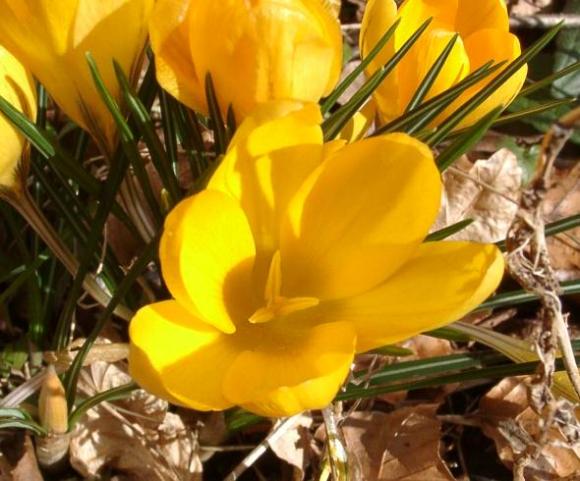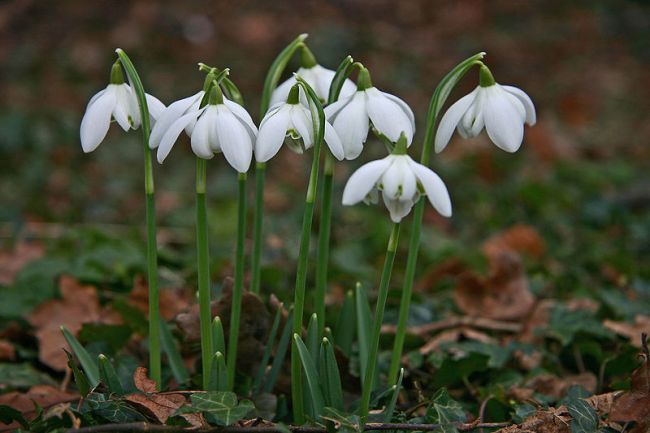
Crocus chrysanthus ‘E.A. Bowles’. Ramin Nakisa. Wikimedia commons.
Every year its a race between the Italian Crocuses and a colony of Mr. Elewes’ Snowdrops to see which bulb is the first to ring in spring, as Wilder puts it in The Fragrant Path. The race seems to favor Snowdrops, not only in the book, but also in reality. However, it takes the Crocus blooms to really ring in fragrant bulb season, even if these Crocii are barely gone by the time the other bulbs are up. I’ve already noticed both in my home of Lexington Kentucky- having taken advantage of the last couple of days of 60 degree weather to begin their short bloom. Even now with the snow falling yet again, both are fearless of the early spring weather and will poke up through snow and hang in through ice, all for the early spring beginning we’ve been craving since February. Its a testament to nature, as both, while unimpressive in the vast scheme of botanical species in the world, create the biggest source of joy for gardeners in the cooler climes of the world.

Galanthus nivalis f. pleniflorus ‘Flore Pleno’. Redsimon. Wikimedia Commons.
Crocus is a large family, related to Lilies, that gives us saffron as well as bloomers spanning the seasons of the year, save for summer. Snowdrops are relatives of the Narcissus tribe, which blooms only a few weeks later often. Both are native to nearly the same regions- the Mediterranean and highlands of south east Europe and the Caucuses, and thrive in similar environments on both sides of the pond. In the United States, one is more likely to see Leucojum (snowflake) rather than Galanthus – but I’ll detail that in the next post. Crocus, however, is abundant across the eastern states, and grows all over older gardens in my home of Lexington, Kentucky. Often, a little stand of Crocus chrysanthus ‘E.A. Bowles’ outside the greenhouses at the University of Kentucky is the first bulb to bloom each year, poking up through snow as early as February.
The scents of both are really delicate and reminiscent of the earliest spring days- they literally smell like the warm spring wind. Well ok, at least the C. vernis species does, other Crocuses are a bit sweeter, with a light hyacinth touch. Snowdrops, like their cousins the Daffodils, have an earthy scent, but the Daffodils are quite a bit more sweet on the nose and free with their scent than Snowdrops. It would really take effort to perceive a scent in a field of either, but the nose is certainly delighted to partake of it when it comes. There are many scented cultivars of Crocus available- including C. chyrsanthus, C. flavus, and C. vernus cultivars in the states, and many more in Europe where they are native. The most fragrant are likely to be C. imperati, where available for the nose to sample its honey-like essence. The snowdrop species available in the states are limited to G. nivalis, though other unique, larger species occur in the native areas in Southern and Eastern Europe.
